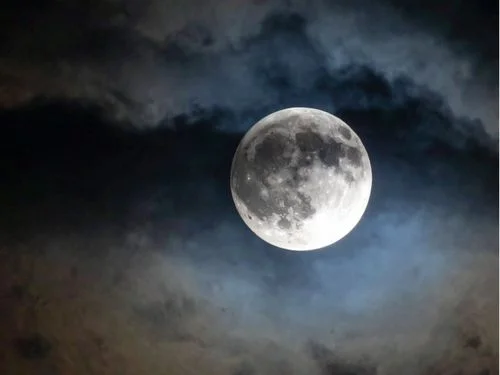In a world full of city lights and digital screens, the night sky is often taken for granted. Yet, there are places where the sky is so clear, the stars seem close enough to touch. Dark-sky tourism has become increasingly popular among travelers seeking a profound connection with nature and the cosmos. Unlike traditional sightseeing, this form of travel focuses on the beauty and wonder of the night sky, from the Milky Way to meteor showers and rare celestial events. For astronomy enthusiasts and casual stargazers alike, these destinations offer a chance to escape light pollution and experience the universe in all its splendor.
Here are 15 must-visit destinations for stargazing and celestial events that should be on every night sky lover’s bucket list.
15 Dark-Sky Spots for Stunning Stargazing Adventures
1. Aoraki Mackenzie Dark Sky Reserve, New Zealand
Located in the heart of New Zealand’s South Island, the Aoraki Mackenzie Dark Sky Reserve is world-renowned for its crystal-clear skies. The region boasts over 430,000 hectares of protected land, where light pollution is strictly controlled. Visitors can see the Southern Cross, the Milky Way, and a panorama of constellations unique to the southern hemisphere.

Mount Cook National Park, within the reserve, provides excellent guided night sky tours. These tours combine telescopes with expert explanations of astronomy, making the subject accessible to both beginners and seasoned stargazers. Winter visitors can also witness spectacular auroras, which dance across the pristine, dark skies.
2. Jasper National Park, Canada
Jasper National Park in Alberta is the first Canadian park to receive the International Dark Sky Preserve status. The park hosts the Jasper Dark Sky Festival every October, drawing thousands of visitors who wish to observe the night sky.
The park’s vast wilderness ensures minimal light pollution, making it ideal for capturing the Northern Lights during the winter months. In summer, the Perseid meteor shower is a breathtaking experience for anyone willing to brave the cool nights. Jasper’s stargazing platforms and ranger-led programs provide excellent opportunities for learning while soaking in the night sky.
3. Mauna Kea, Hawaii, USA
Mauna Kea, a dormant volcano on the Big Island of Hawaii, offers an unparalleled stargazing experience. At an altitude of 13,796 feet, it is one of the world’s highest observatories, and the air is so clear that astronomers consider it ideal for telescopic observations.
Visitors can join guided sunset and stargazing tours, often accompanied by expert astronomers who provide insight into planets, galaxies, and nebulae. Mauna Kea’s summit is home to some of the world’s most advanced telescopes, but even casual travelers can enjoy the night sky from lower elevations in the visitor center. Remember to acclimatize to the altitude and dress warmly, as temperatures can drop significantly at night.
4. Namib Desert, Namibia
The Namib Desert is not only one of the oldest deserts in the world but also one of the best places to view the Milky Way. With minimal human settlements and almost no light pollution, the sky here is intensely vivid.
Several lodges and camps in the desert offer specialized stargazing experiences, complete with telescopes and astronomer guides. Visitors can observe celestial events, such as lunar eclipses and meteor showers, in a timeless environment. The desert’s vast, open landscapes enhance the sense of solitude, making stargazing a deeply immersive experience.
5. La Palma, Canary Islands, Spain
La Palma is recognized as a Starlight Reserve, thanks to its strict light pollution regulations. The island’s high altitude, clear skies, and low humidity make it a prime location for stargazing.
Roque de los Muchachos Observatory sits at the top of the island, offering both professional research opportunities and public astronomy nights. Tourists can explore the cosmos while enjoying the unique volcanic landscapes below. La Palma also hosts special celestial events, including meteor showers and rare planetary alignments, making it a favorite among amateur astronomers worldwide.
6. Cherry Springs State Park, Pennsylvania, USA
For those in the United States, Cherry Springs State Park offers some of the darkest skies on the East Coast. The park is a certified Dark Sky Park, attracting both amateur and professional astronomers.
Visitors can join organized star parties, where telescopes and binoculars are provided, or lie on a blanket to gaze at the Milky Way stretching across the horizon. The park’s remote location and limited nearby development ensure minimal light pollution, providing an unforgettable stargazing experience.
7. Kiruna, Sweden
Kiruna, located above the Arctic Circle, offers not only stargazing but also a chance to witness the Northern Lights. Between September and March, the aurora borealis paints the skies with vibrant shades of green, purple, and pink.
Guided tours in Kiruna often include nighttime snowmobile or dog-sled trips, allowing visitors to chase the aurora in comfort and safety. The town also boasts excellent facilities for astrophotography, allowing travelers to capture celestial events in stunning clarity.
8. NamibRand Nature Reserve, Namibia
Another Namibian gem, NamibRand Nature Reserve, is an expansive wilderness offering some of the darkest skies on Earth. The reserve has strict lighting rules to preserve its dark-sky status, ensuring that every star shines bright.
Visitors can participate in guided stargazing safaris, where astronomers provide telescopes and insight into distant galaxies. The reserve’s combination of desert landscapes and clear skies creates a dramatic backdrop for observing meteor showers and other celestial phenomena.
9. Exmoor National Park, United Kingdom
Exmoor National Park in southwest England is a certified International Dark Sky Reserve, offering wide-open skies and stunning views of the Milky Way. The park’s elevation and rural location reduce light pollution, making it a favorite for both locals and tourists.
Exmoor hosts regular stargazing events and astronomy workshops. For those seeking a more relaxed experience, the park offers numerous trails and viewpoints that allow visitors to enjoy the night sky in quiet solitude. The seasonal meteor showers and rare planetary alignments are especially spectacular here.
10. Uluru, Northern Territory, Australia
Uluru, an iconic sandstone monolith in Australia’s Red Centre, provides an extraordinary setting for stargazing. The desert’s remote location ensures that the night sky is unpolluted, allowing visitors to see millions of stars with remarkable clarity.
Several tours around Uluru focus on astronomy, often including indigenous storytelling that connects the stars to ancient Aboriginal traditions. The combination of cultural heritage and natural beauty makes Uluru a unique destination for those seeking both knowledge and inspiration under the night sky.
11. Atacama Desert, Chile
The Atacama Desert is famous among professional astronomers, thanks to its altitude, dry climate, and minimal light pollution. This desert provides some of the clearest skies in the southern hemisphere.
Visitors can enjoy guided tours at observatories like ALMA or smaller tourist-oriented setups that allow hands-on stargazing. Events such as lunar eclipses and comet appearances are breathtaking here, and the desert’s vast, barren landscape adds a sense of scale and wonder to every celestial observation.
12. Galloway Forest Park, Scotland
Scotland’s Galloway Forest Park is the UK’s first Dark Sky Park and is renowned for its spectacular night skies. Its remote location ensures minimal artificial light, and the forested landscapes provide a peaceful, natural setting for stargazing.
The park offers regular astronomy events, including telescope sessions and guided night walks. Visitors often spot shooting stars, planets, and distant galaxies. Galloway’s combination of tranquility, accessibility, and clear skies makes it perfect for both serious astronomers and families seeking a magical night under the stars.
13. Jasper SkyTram, Alberta, Canada
In addition to the park itself, Jasper offers the SkyTram, which takes visitors high into the mountains for an elevated stargazing experience. The higher altitude reduces atmospheric interference, providing clearer views of celestial events.
From the SkyTram, travelers can witness sunrise and sunset, then stay for night tours that showcase constellations, meteor showers, and the occasional aurora borealis. This combination of elevation and dark skies creates an unforgettable stargazing adventure.
14. Big Bend National Park, Texas, USA
Big Bend National Park, located in western Texas along the Rio Grande, is famous for its clear, dark skies. Its remoteness from urban centers makes it ideal for observing the Milky Way, planets, and meteor showers.
The park hosts the annual Big Bend Star Party, where amateur astronomers and families gather to enjoy telescopic views and astronomy lectures. The desert landscapes and mountainous horizons provide dramatic settings that enhance the celestial spectacle.
15. Mont-Mégantic, Quebec, Canada
Mont-Mégantic National Park in Quebec is a certified Dark Sky Reserve and offers some of the darkest skies in eastern Canada. The park is home to an astronomical observatory that welcomes visitors for public stargazing sessions.
Guided tours, night hikes, and workshops provide excellent opportunities for learning about the universe. Mont-Mégantic also hosts special events during meteor showers and lunar eclipses, ensuring that travelers have front-row seats to nature’s celestial performances.
Tips for Dark-Sky Tourism
When visiting these destinations, there are a few key considerations to keep in mind to enhance your experience. Dress warmly, especially in desert or high-altitude locations, as temperatures can drop sharply at night. Bring a telescope or binoculars if you have one; however, many dark-sky locations provide equipment for use. Avoid using artificial lights, including phone screens, to preserve night vision. Finally, check for celestial events such as meteor showers, lunar eclipses, or planetary alignments, as they can enhance your stargazing experience.
Many destinations also offer cultural and educational components, such as indigenous stories connected to the stars, astronomy workshops, and photography tours. Combining these experiences with the natural beauty of the night sky ensures a truly memorable adventure.
Embrace the Wonders of the Night Sky
Dark-sky tourism is more than just a trend. It is an opportunity to reconnect with the universe, escape the overwhelming brightness of modern life, and witness the grandeur of celestial events. From the deserts of Namibia and Chile to national parks in Canada and the United States, the world offers countless destinations for stargazers. Whether you are an experienced astronomer or a casual observer, these 15 locations provide the perfect backdrop for exploring the night sky.

The next time you plan a trip, consider looking up. The universe is waiting.





